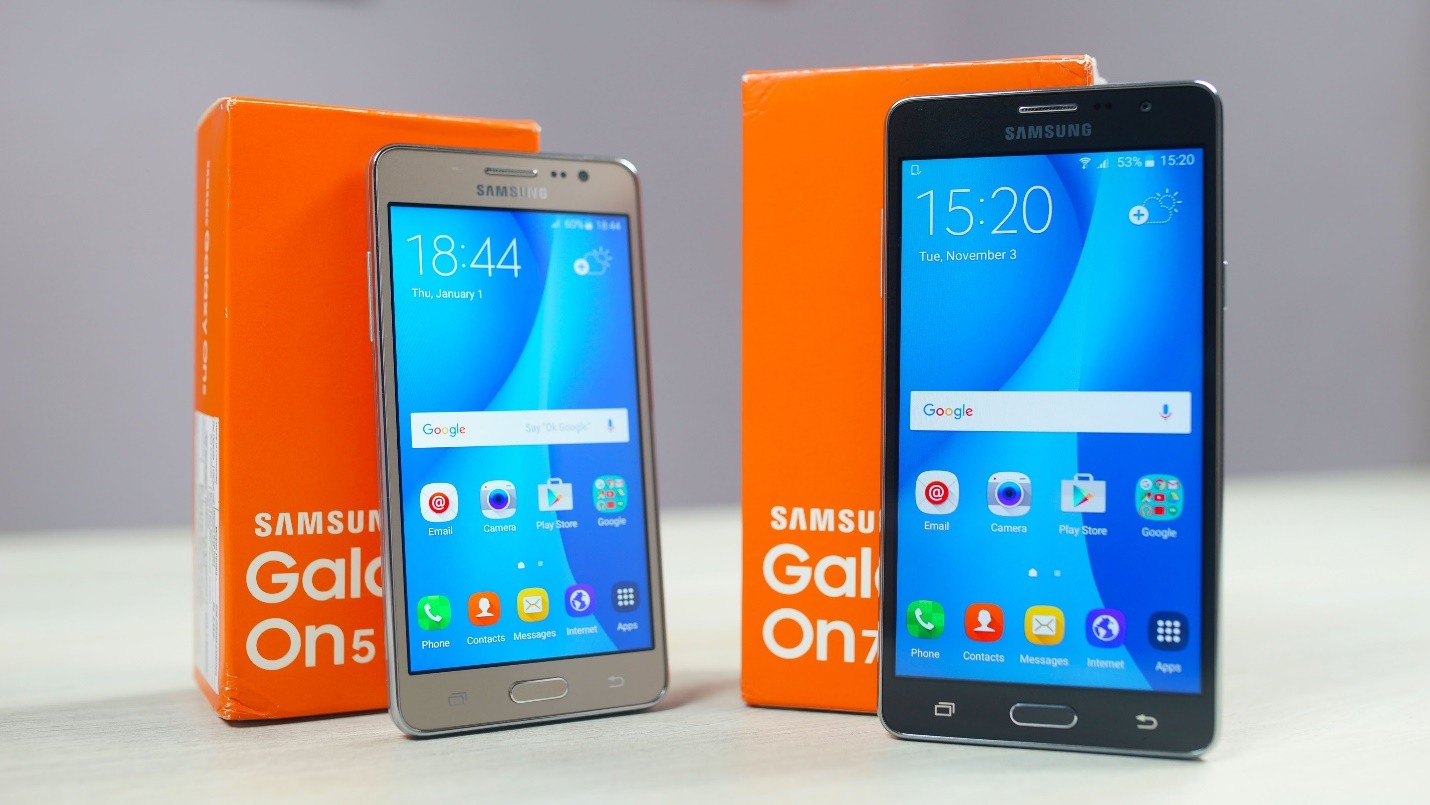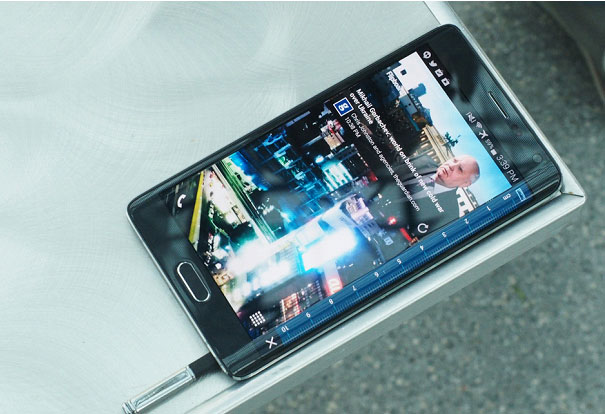Samsung has recently unveiled its brand new Galaxy series smartphones, the Galaxy On5 and On7. With this release, the company has declared these two models as value for the money devices and planned to target the young consumers. Priced aggressively, the new Galaxy series smartphones pack features including Ultra Data Saving (UDS) and MixRadio.
Look and Feel
The South Korean company released these budget handsets after months of analyzing customer needs and working on the new model. Both the smartphones have identical front and back panels. Apart from the screen size, there is not any noticeable difference between the devices. The use of metal frames has given the handset a sturdy feel. The signature physical Home button is just below the screen on both the phones. The volume rocker is located on the left while the power button is on the right. When compared, Galaxy On5 is easier to hold using a single hand.
Specifications and feel
The Galaxy On5 proudly features a 5-inch HD 720x1280p TFT display that is powered by a 1.3GHz quad-core processor coupled with 1.5GB of RAM. It sports an 8MP rear camera and 5MP front camera having decent picture quality. It holds 8GB of built-in storage that is expandable up to 128GB. Various connectivity options on the Galaxy On5 include 4G LTE, Micro-USB, 3G, Bluetooth, GPS and Wi-Fi b/g/n. The phone weighs 149 grams and owns a 2600 mAh battery.
On the other hand, the Galaxy On7 features nearly identical specifications to Galaxy On5, except for the larger screen size, display, different processor, high-resolution camera sensor, and larger battery. Galaxy On7 sports a 5.5 inch HD TFT display and runs on a 1.2GHz quad-core Qualcomm Snapdragon 410 processor with 1.5GB RAM. It clicks brilliant pictures with a 13MP rear auto focus camera and a 5MP front selfie camera. Galaxy On7 is similar to the Galaxy On5 in terms of built-in expandable storage. The battery size is 3000 mAh, which is larger than On5 and measures 151.8×8.2mm, weighing 172 grams. Running Android 5.1.1 Lollipop, both the handsets are skinned with Samsung’s TouchWiz UI.
Verdict
While browsing through the default apps and menu, one of the major takeaways is that there is a lot less of Samsung’s bloatware than present in other models. Both smartphones have very few pre-loaded apps but there are no Microsoft apps present. Moving towards the camera, it is quickly launched within a few seconds of touching the icon. The camera is uncluttered and switching between the cameras is quick and easy. Images taken with the Galaxy On7 were crisp while those with On5 were quite blurry when zoomed. Both the devices are facing stiff competition, but they are worth their costs.

